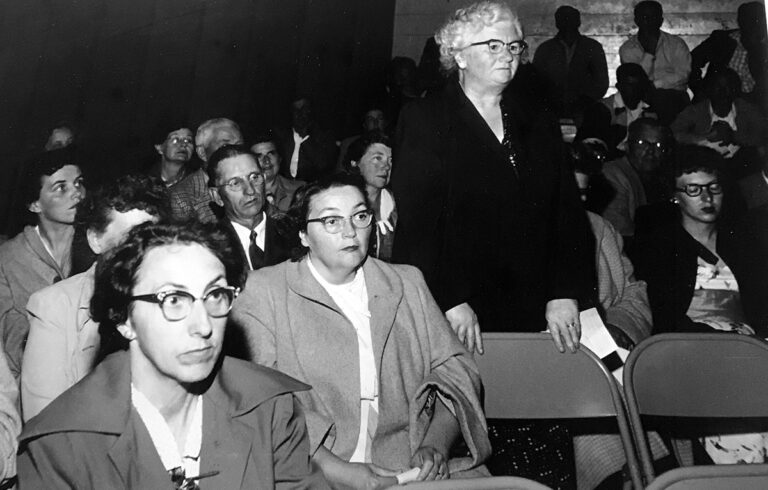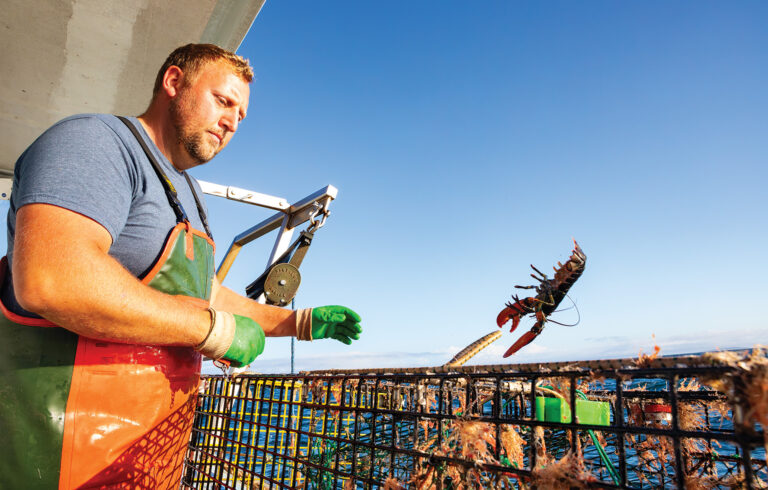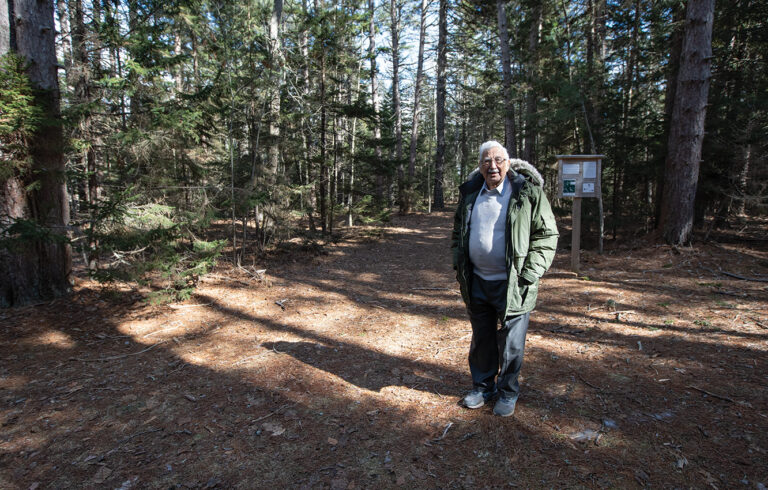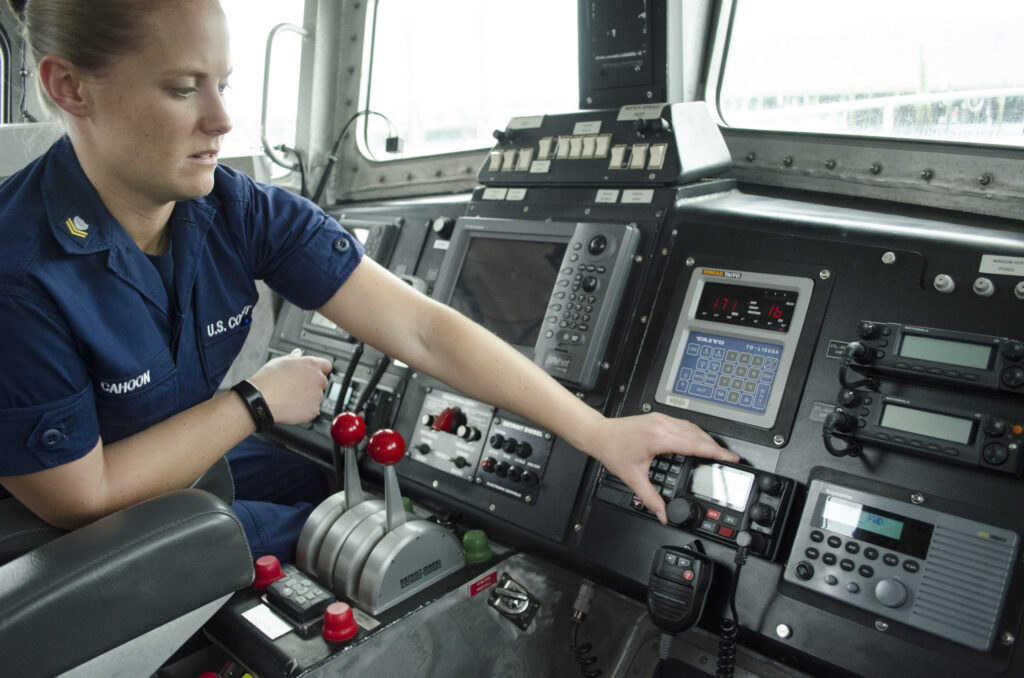
It is practically a cliché to call Matinicus Island isolated, but it is. The closest mainland city (and U.S. Coast Guard station) is in Rockland at about 23 miles distant. In the heart of winter, the state ferry may make one trip from Rockland to the island each month. Bad weather here has a more serious definition than it does in the rest of the state. Islanders use cell phones, but no one relies on them.
“Here on the island, if you’re not standing in just the right spot or facing the right direction,” says Clayton Philbrook, “you can usually text in a lot of places, but as far as having a voice conversation, it doesn’t work.”
What islanders do rely on is VHF radio. No matter where you are on the island, you can talk to those in boats five or six miles away, and sometimes farther, depending on the weather and the tides. Just about everybody on Matinicus has one, says Philbrook, who grew up on the island and has been lobstering there about 40 years. “There’s a lot of things you couldn’t do without one,” he says. “If nothing else, it’s a safety issue.”
Radios are in island kitchens, boats and road vehicles. In an emergency, Philbrook says, without VHF radios there’d be “absolutely” no way for those on land to communicate with those on the boats.
“The first person up at my house that goes out in the kitchen turns the radio on in the morning. The last one going to bed at night turns ‘em off,” Philbrook says. “You might be the only one that hears that call. We’ve had more than once around here that boats have gone down or gotten in big trouble. If somebody wasn’t listening, it would have been a lot worse than it was. We’re out here a long ways. We’re already halfway to where somebody’s in trouble.”
That help, via VHF, goes both ways.
Sometimes, islanders need the radios to contact those in the boats to come back home for an emergency on land, says Rachel Bishop, Frenchboro’s emergency management director, like if there’s a fire on the island.
Frenchboro doesn’t have a dedicated fire department so when there’s a fire, every able-bodied person is needed to help. “If it happens during the day, the fastest way to get ahold of the guys on the boats would be by VHF,” she says, “because it’s one call and you can pretty much get most everybody and anybody.”
Everyone listening to VHF radio can hear the conversations that take place over the channels. There are no private conversations over VHF. But that open transmission makes it easier and faster to respond, especially in an emergency, giving marine VHF radio a crucial and distinct advantage over cell phone communication—instead of contacting just one person (as with a cell phone), anyone listening to the channel you’re transmitting on can hear you and respond.
VHF is short for very high frequency and refers to the radio frequency range, sometimes called VHF maritime mobile band, between 156.0 MHz and 174 MHz. It is used primarily for navigation and to communicate ship-to-ship and ship-to-shore said Captain Leslie Eadie III, the master of Maine Maritime Academy’s training ship State of Maine.
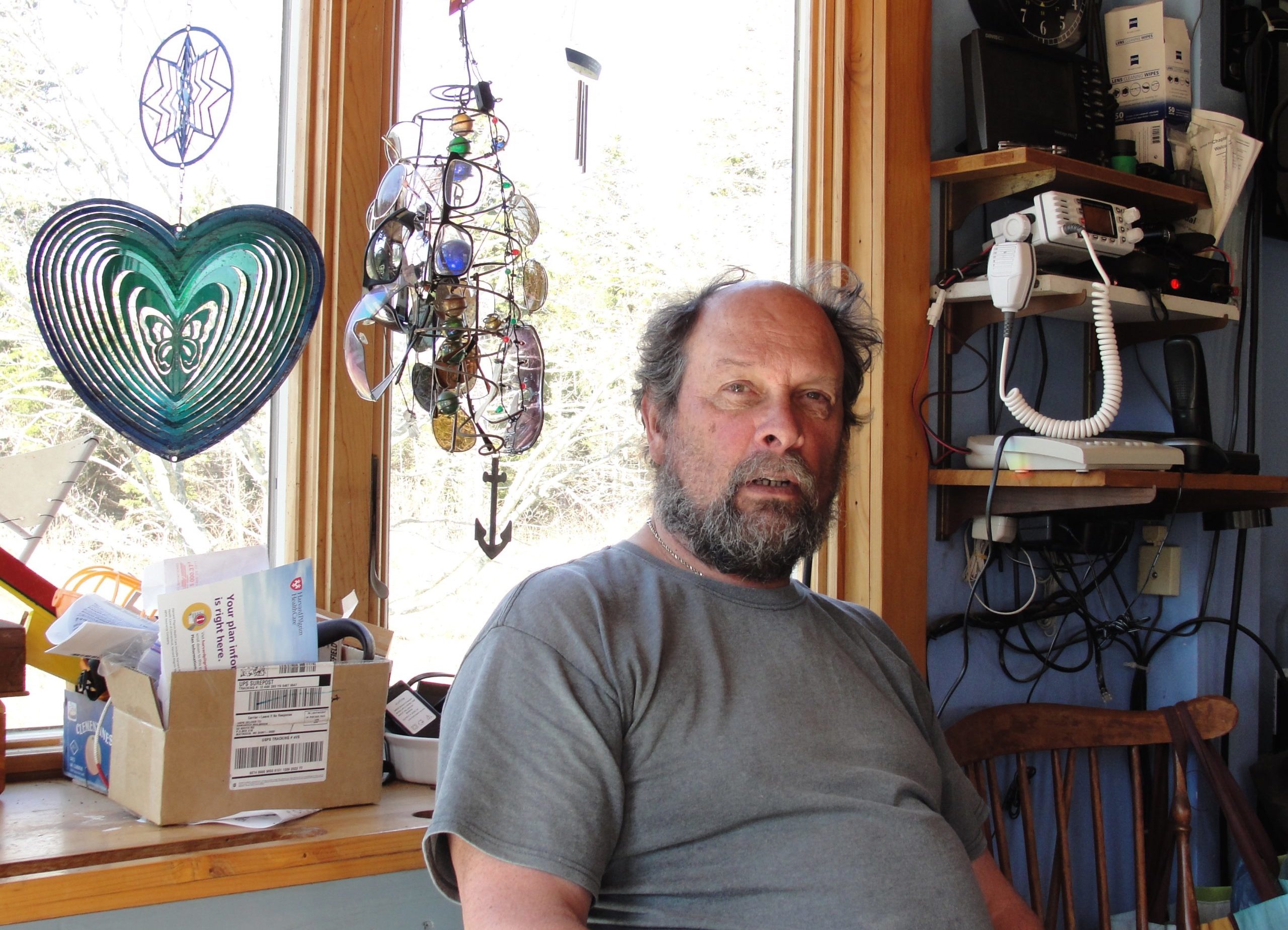
“The first person up at my house that goes out in the kitchen turns the radio on in the morning. The last one going to bed at night turns ‘em off.”
—Clayton Philbrook
Nearly all fishing vessels have at least one, if not two, on board. These can be portable or permanently mounted and tied into a boat’s electrical system. Some vessels—those carrying six or more passengers, for example—are legally required to have a VHF radio on board, but most recreational or “pleasure” boats are not.
VHF communications are by “line of sight.” That means the antennas of VHF radios must be able to “see” each other for effective communication. Most marine VHF radios have a range between five miles and 25 miles, depending on obstacles, antenna height, the power of the specific VHF radios (hand-held ones have a maximum transmit power of three watts to five watts; fixed transmit power is between one watt and 25 watts), tide height (higher tides in port raise the height of boats and their VHF antennas, which raises the line of sight) and atmospheric conditions.
In certain atmospheric conditions, says Eadie, a phenomenon called ducting can happen. This is when a radio transmission gets trapped in a warm area between areas of cold air. The result is that the radio transmission travels a lot farther than it should be able to. Eadie said he has been out on the water when he heard radio conversations between boats 1,000 miles away from him. Fishermen near Matinicus Island have heard Bay of Fundy traffic control talking on VHF radio 154 miles away.
The federal government has rules about how marine VHF radio i
s used. For example, fines can be levied by the Federal Communications Commission (FCC) if people use profanities over the radio, says Eadie, although he isn’t aware of anyone being fined for such an infraction.
“It’s not unusual for a message such as, ‘Has anybody seen my husband? Send him home,’ to come over the VHF. ”
Those using marine VHF radios stand by on certain channels. The U.S. Coast Guard encourages users to monitor channel 16, which is reserved for distress messages and to call other boats. Once a non-distress message has been acknowledged by the intended recipient, the talkers should move to a working channel to keep channel 16 open. Radio listeners may also stand by on channels that other fishermen in the area use to communicate.
A radio conversation ties up the channel so no one else can use it until those who are using it sign off. That’s why conversation needs to happen on working channels rather than channel 16, and why conversations are supposed to be limited to navigational information, but, as anyone who uses marine VHF will tell you, interpretations of those regulations are broad.
Weather Reports And Gum Flapping
“They talk about all kinds of shit,” says Herman Coombs, who fishes out of Harpswell. “It can go from baseball to football to somebody teasing somebody about something. It’s not always about fishin’.” Sometimes the good-natured heckling is pretty amusing, but if the gum flapping gets to be too annoying, says Coombs, he will set one of his two VHFs to scan.
VHF radios are a part of the very fabric of life for fishing communities, so it’s no surprise that it’s used for all sorts of communications beyond navigation.
The radios are often used to communicate basic information between families on land and those working on the water. For instance, because VHF radios are practically everywhere on islands like Frenchboro and Matinicus, you can track down anyone anywhere—on land or on the water. It’s not unusual for a message such as, “Has anybody seen my husband? Send him home,” to come over the VHF.
Because of the long hours fishermen spend on the water, they’re often gone and working before the kids are awake, notes Bishop of Frenchboro. Once the kids are up, they may wish their family members out on the boats a good morning via VHF.
Kids from the elementary school sometimes do a morning weather report via VHF. Bishop says the weather report is a way for the kids to learn about weather and ocean conditions and get used to public speaking, but it’s really a special thing to the fishermen out on the water. At least one of them responds back to the kids when their report is over.
It is these personal moments shared over VHF that Herman Coombs’ wife Monique loves the most. She says one of her favorite memories of listening to marine VHF chatter was one evening when she and her husband were out on the water and they heard a grandfather wishing his grandson a goodnight. “That’s something you only experience in a fishing community out on the water,” she says. “It’s pretty special.”

